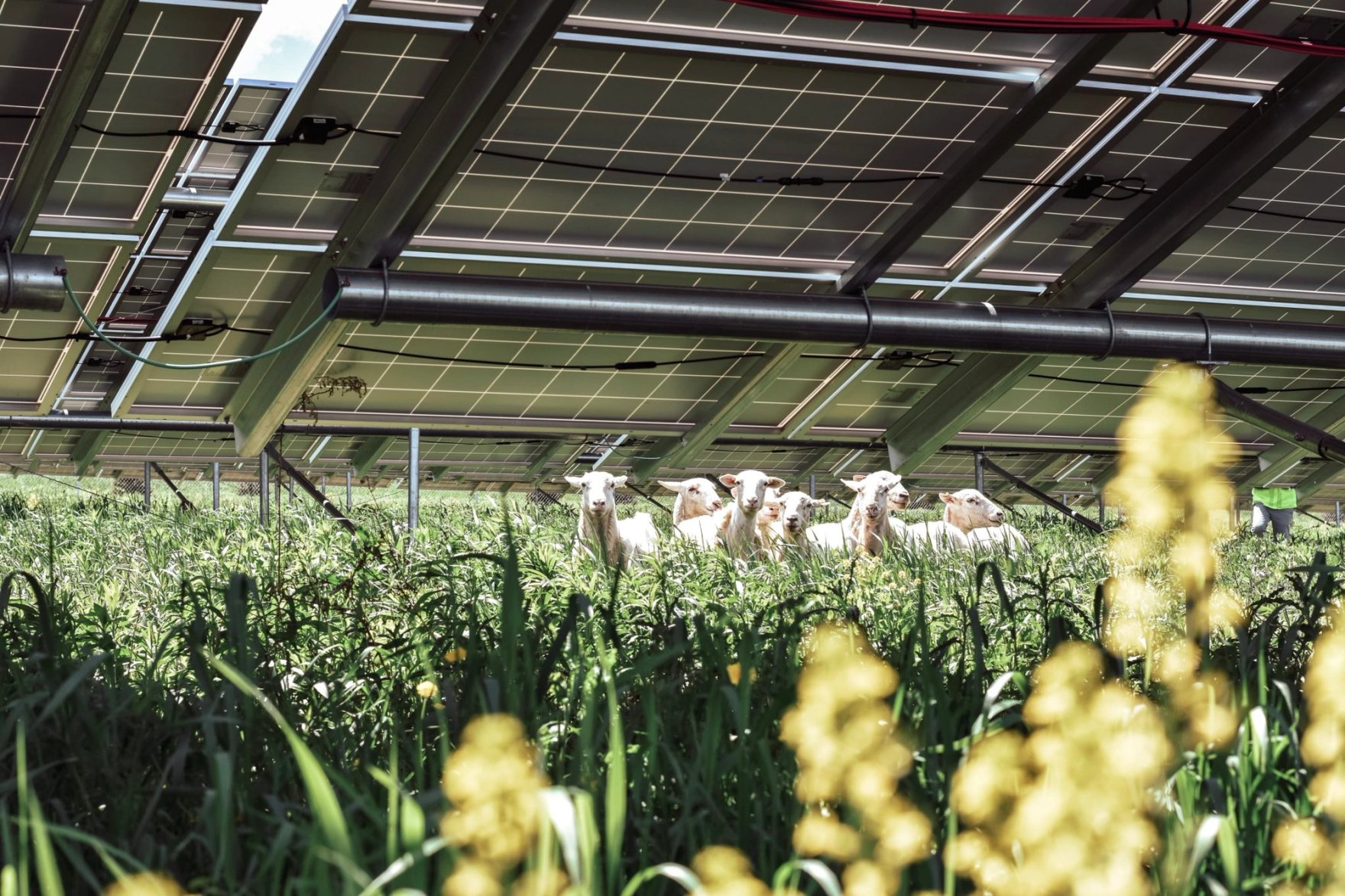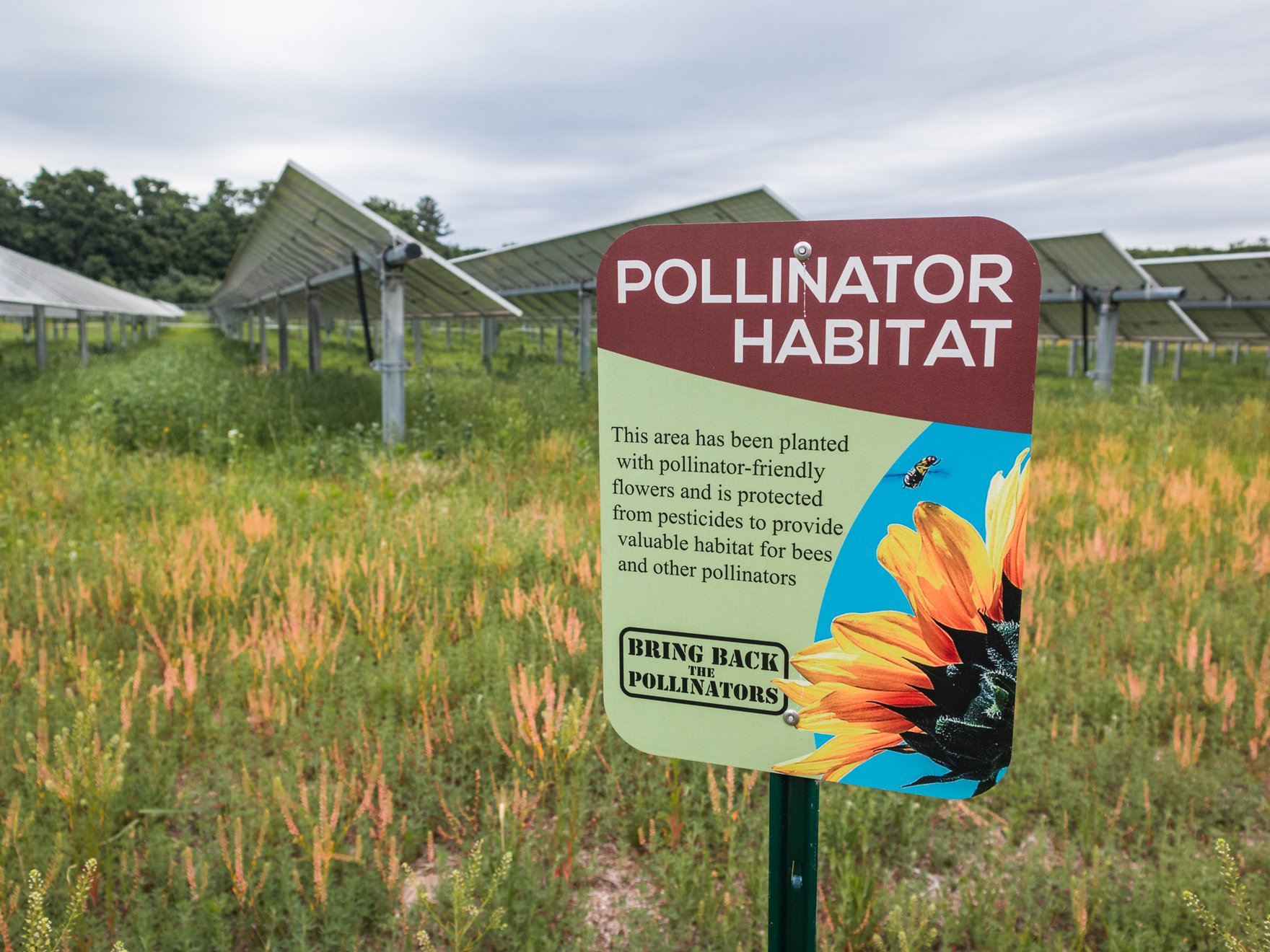
Nexamp has always worked with the sun, but now we’re hosting all kinds of life on our community solar farms. Certified Wildlife Sanctuaries, pollinator-friendly habitats, and animal grazing – all the details are buzzing below.
Certified Wildlife Sanctuaries

Earth is a shared resource, and honestly, wildlife was here first. So, to ensure Nexamp’s community solar farms are beneficial to all, we’ve started certifying them as wildlife sanctuaries through The National Wildlife Federation. Foxes, deer, hawks, ospreys, mice, bunnies, coyotes, and pollinators – you name it, we’ve seen them, and now we’re protecting them. This process involves five key components.
- Food — native plants, seeds, nuts, berries, nectar, and fruits
- Water — streams, ponds, lakes, and birdbaths
- Shelter — thickets, shrubs, and birdhouses
- Nurseries— shrubs, vegetation, and nesting boxes for wildlife to raise their young
- Sustainable practices— native cover crops, water conservation, and no pesticides
Helping endangered species recover is the headline, but there are loads of other benefits to hosting these sanctuaries.
- Boosts biodiversity
- Improves air quality
- Increases carbon sequestration
- Limits erosion
- Sets a worthy example for others to follow
So far, Nexamp has more than four dozen certified sanctuaries in Massachusetts, New York, Rhode Island, and Illinois, but why stop there? Let’s get into how our pollinator-friendly habitats are boosting biodiversity.
Pollinator-Friendly Habitats

Did you know that 200,000 - 350,000 different animal species support pollination, and together they contribute $235 -$577 billion in economic value? More than two-thirds of our world’s crops rely on these hummers and buzzers, and Nexamp is proud to be hosting them on farms in Illinois, Minnesota, Massachusetts, and Maine. Mostly due to the efforts of Kelley Fike, director of civil engineering, who has been dedicated to pollinator habitats for the past four years.
“There’s not a one-size-fits-all approach. We develop custom seed mixes that accommodate site conditions, native species, plant diversity, blooming forbs, and blooming seasons. That’s the easy part of the pollinator-friendly certification process. The challenges are the maintenance practices that must be implemented to limit weed pressure and allow the native/pollinator species to establish. This takes about 3-4 years, which is where Nexamp is today.” – Kelley Fike
Nexamp has earned certifications on 25 projects, representing 320 acres of pollinator-friendly habitat. So, you may see bees, butterflies, and other pollinators on Nexamp farms, as well as two other bahhhutiful animals grazing their way into our hearts.
Pig & Sheep Grazing

Who let the sheep and pigs out? Nexamp did. For quite some time, we’ve been working with local shepherds to lower land maintenance costs with sheep grazing, and just this year, we added pigs! The animals pair perfectly with our farms as they are small enough to roam below the panels and hungry enough to munch all day. So, instead of using heavy machinery that breaks down topsoil while producing emissions, we give these animals free rein to graze. And, of course, we cater to their diets. We call it the fuzz and buzz mix, and so far, it's been a hit.
If you're wondering whether sheep and pigs also graze in Nexamp’s pollinator-friendly habitats, the answer is no. Unfortunately, native plants are often toxic, so it’s important to keep these efforts separate. As a long-term steward of the land, Nexamp will always put the health of nature first.